By Taylor Tibbs
We naturally assume that plants grow in soil. However, not all plants need soil to survive! Epiphytic plants or epiphytes, like orchids, “air plants”, moss, and many more, can get their water and nutrients straight from the air itself. This means that their roots don’t have to be buried in the dirt – or in some cases, means they don’t need roots at all!
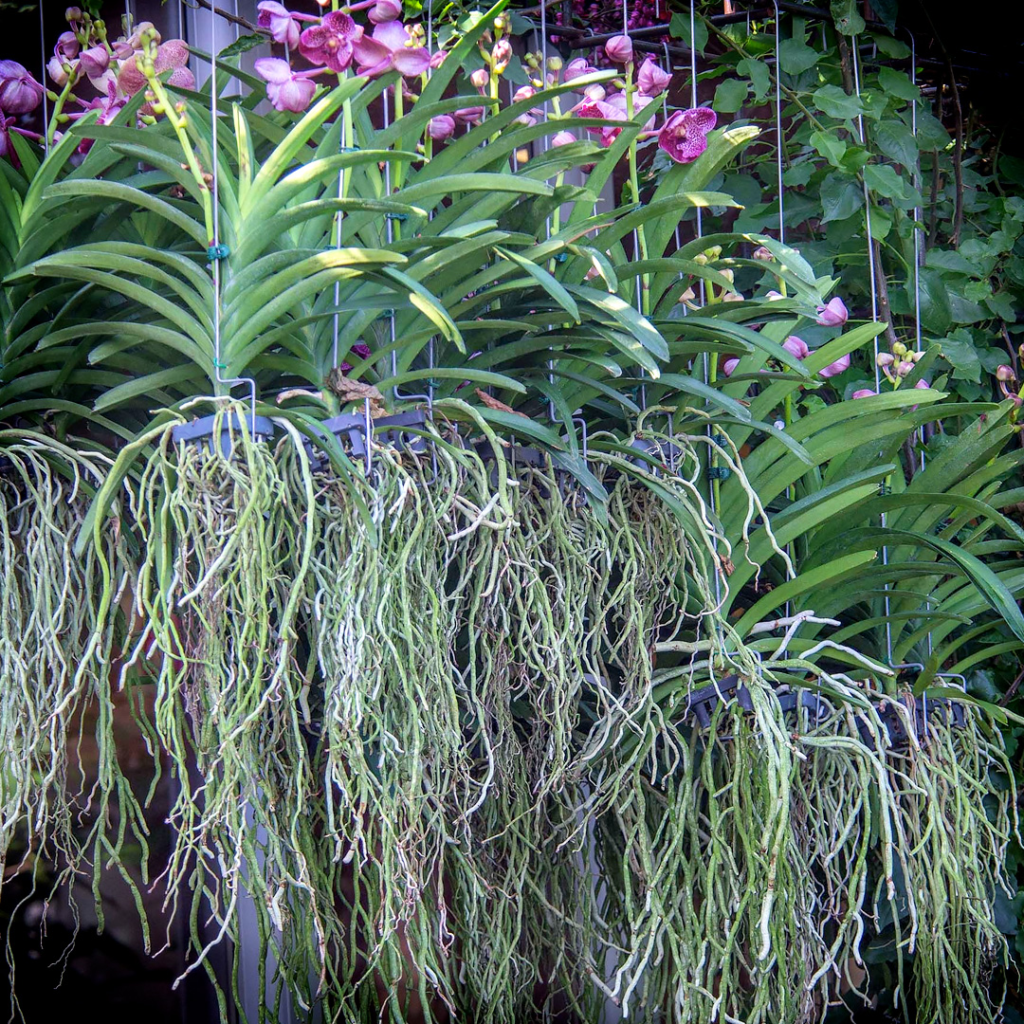
Orchids
Orchids in the wild grow on the trunks and branches of trees. They have specialized aerial roots that can suck up moisture from the air. Their roots are surrounded by a thick greenish-white layer called velamen, which allows moisture to come in, but not out. Orchids are tropical plants that can be found across the globe in environments that are very humid, so there is lots of moisture in the air for their aerial roots to collect. High humidity also means lots of rain, providing lots of sources of water for the orchids!
As amazing as orchid roots are, they are often prized for their stunning flowers, which come in a range of colors, shapes, patterns, and sizes depending on the species. Unlike most flowering plants, they can bloom year round and their blooms can last for months at a time. (No wonder they are a houseplant favorite!)
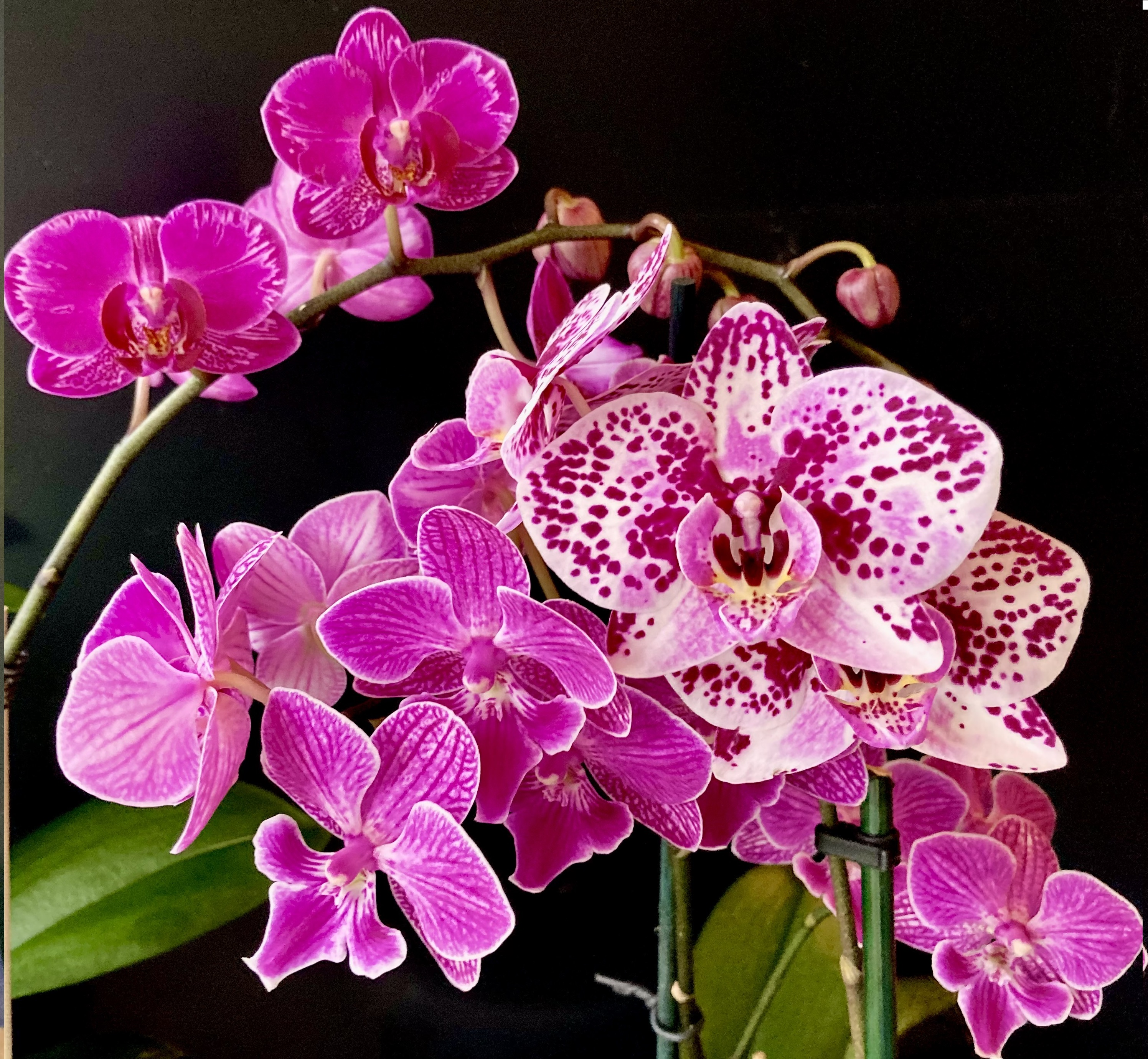
Bromeliads & Tillandsia
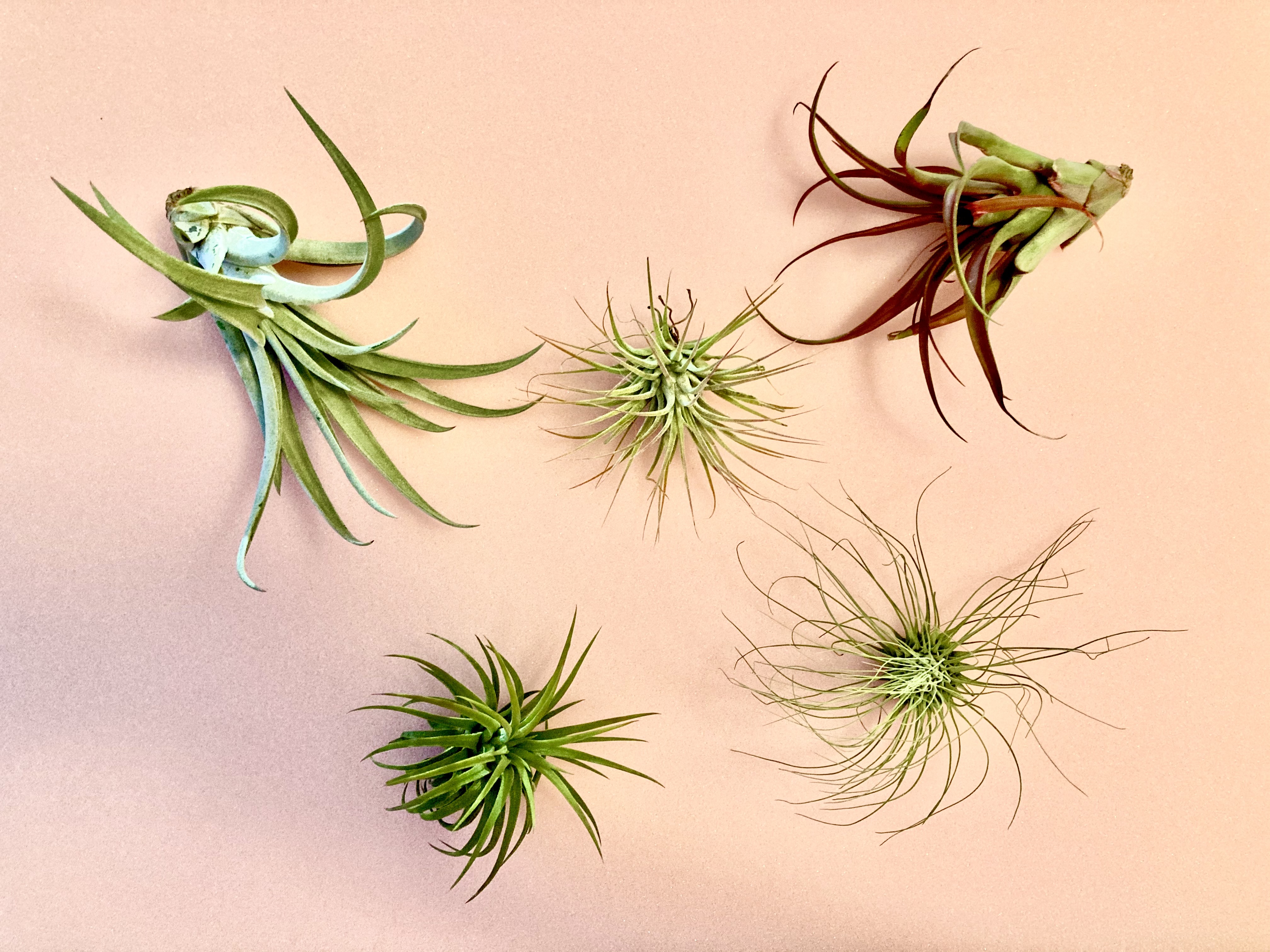
Members of the Bromeliaceae family or “Bromeliads”, which include pineapple plants and many Tillandsia species (often called “air plants”), are also epiphytes. Like orchids, Tillandsia are natively found in the tropics and typically grow in the crooks of tree branches. They often don’t form roots at all and when they do form roots, their only purpose is to help anchor them to trees – not take up water.
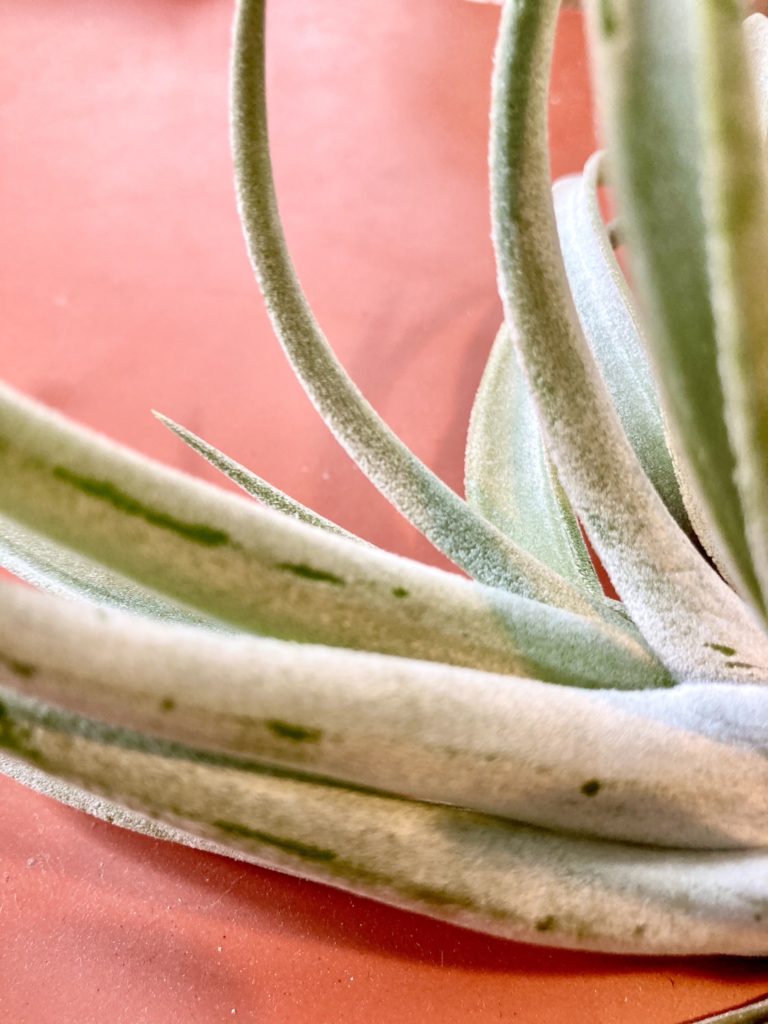
“Air plant” leaves are specialized to suck up moisture from the air. They suck up water and nutrients through scale-like structures on their leaves called trichomes. Trichomes are present on all plant leaves, but Tillandsia and other Bromeliads have much larger ones, which aid them in sucking up even more moisture!
Much like orchids, Tillandsia come in a wide variety of shapes and sizes. If you have ever been to places with humid tropical climates like Florida, Central/South America or even coastal areas in North Carolina – you might have noticed some odd gray-green wispy stuff on the trees. This wispy stuff is commonly called “Spanish Moss” but it actually isn’t a moss at all – it’s an air plant (Tillandsia usneoides)!
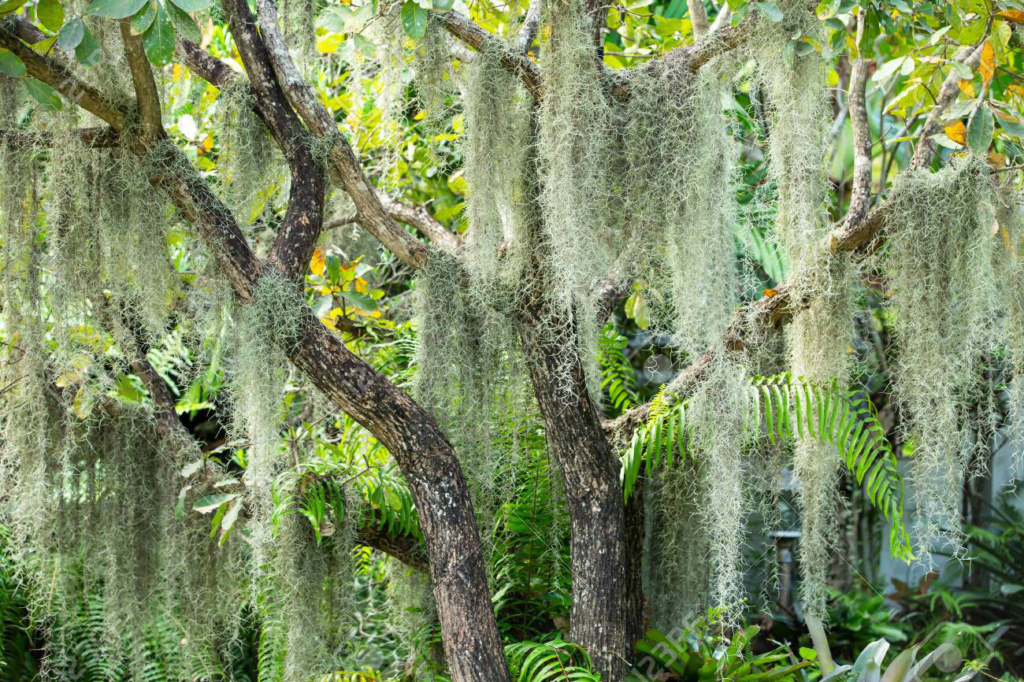
Epiphytes remind us that there are always exceptions to every rule. Not all plants need dirt – or even roots – to survive. Nature always has a way of surprising us!
